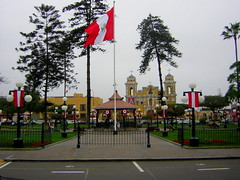Say goodbye to Eden
The following article has been translated by me from an insert of the newspaper El Comercio, regarding the sale to oil companies of a large part of the most biodiverse place on earth, the Amazon rainforest of Madre de Dios in southern Peru.
No one is against the exploitation of oil per se, but when it is done within the boundaries of a national park of such importance as the Bahuaja Sonene, declared by the National Geographic Society as one of the seven most emblematic natural sanctuaries of the world, it is a different story.
Behind everything is petroleum. Behind wars, behind global warming, behind the insane position of wanting to mutilate a national park. “The news impacted me but didn’t surprise me”, said Daniel Winitzky, an Argentinean of 48 years, who has visited Candamo some thirty times (in 1999 he presented an excellent documentary about “the last jungle without man”). He explains that we are at a breaking point, that if Candamo can hold out 25 years, and the fever for oil, then we might be able to save it. Meanwhile, so much is going to be in danger.
Winitzky, who was in Candamo in January of this year, explains that due to its isolation, this site is unique in the world. “Thomas Vallqui, the ornithologist, was seated in the jungle and a deer passing by bumped into him”. Tigrillos (wild cats), sachavacas (pig-like creature) and ronsocos (large bear-like rodents), they all curiously approach these strange two-legged almost hairless creatures exploring their jungle. They don’t fear humans. But they should.
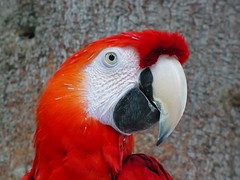 James D. Gilardi, PhD, a British biologist specialising in ornithology in tropical forests and marine vertebrates, is the director of the prestigious World Parrot Trust and is extremely worried by the storm that awaits Bahuaja Sonene and, like Winitzky, considers this a key battle for sustainable development. “To save a natural gem requires more than drawing lines on a map. It’s in moments like these, when nature is threatened with the exploitation of gas and petroleum… we can only hope that the spirit that formed this national park remains strong”, expressed Gilardi. “There are more species of parrots and macaws in Candamo than any other place on earth, of all the forests of the world. Of all those forests that deserve to be saved, Candamo is, in my opinion, the most important”.
James D. Gilardi, PhD, a British biologist specialising in ornithology in tropical forests and marine vertebrates, is the director of the prestigious World Parrot Trust and is extremely worried by the storm that awaits Bahuaja Sonene and, like Winitzky, considers this a key battle for sustainable development. “To save a natural gem requires more than drawing lines on a map. It’s in moments like these, when nature is threatened with the exploitation of gas and petroleum… we can only hope that the spirit that formed this national park remains strong”, expressed Gilardi. “There are more species of parrots and macaws in Candamo than any other place on earth, of all the forests of the world. Of all those forests that deserve to be saved, Candamo is, in my opinion, the most important”.
Obviously, the ministers of the Government don’t think the same way. 70% of the Amazon rainforest of Peru has been sold in lots for oil exploration and exploitation. The problem is not this in itself, but where and how it is done. The regional president of Madre de Dios, Santos Kaway, only found out about the sale of 209,782 hectares of the Bahuaja Sonene national park after being told by a journalist, two days after the national government made the sale to oil interests. Luis Alfaro, then chief of Peru’s National Institute of National Recourses was abruptly removed from his job, after he expressed his deep discomfort with the sale, declaring it unconstitutional and breaking various international agreements. He says the sale has demonstrated the weaknesses and susceptibility of the Government in regards to oil contracts.
The sale even violates conditions of the hard-fought for Free Trade Agreement with the United States, violating chapter 18, where it expressly prohibits reduction of protected areas and destruction of rare natural resources.
 |
In this case, one fifth of the Bahuaja Sonene reserve, right in its nucleus, is being removed and sold. |
Author of many books dealing with ecology and director of the conservation program Peruvian Society of Environmental Rights (SPDA), Pedro Solano, recently attended the Congress of Parks in Argentina. The participants were dismayed by the “lack of stability in the conservation policies in cases like this, where the government itself only in recent years stated that this national park should and would be permanently protected under the strictest possible orders.” Solano continues, “It appears incoherent, that all the studies done on the Candamo are to be ignored in order to take a new decision – one that allows the area to have absolutely no protection. The justification for this, ‘that there’s oil’, is no justification to reduce the size of the park, patrimony of the nation. The Government will not explain how this natural heritage can continue to be viable if you destroy it’s most important and pristine part”.
Kurt Holle, president of the Peruvian Association of Adventure and Ecotourism is clear that this sale will tremendously affect tourism in Madre de Dios, which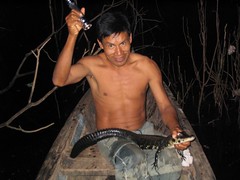 happens to be consistently increasing between 15 and 20 per cent annually, becoming the principle destination of 50,000 foreign visitors a year. “The impact on the tourist’s perception of Peru is serious. This destination loses its integrity being next to a petroleum operation. Besides, many species such as the jaguar, the huangana (a jungle pig) and the macaws need large territories to survive. The famous mud-licks of the macaws, that attract so many people are going to lose their splendour. And, the area sold being at the head of a river, the fish and the water are going to suffer the consequences. There are 40 tourist-frequented look-outs along the length of the river Tambopata and river Madre de Dios that will be affected and no longer receive investment”, Kurt says.
happens to be consistently increasing between 15 and 20 per cent annually, becoming the principle destination of 50,000 foreign visitors a year. “The impact on the tourist’s perception of Peru is serious. This destination loses its integrity being next to a petroleum operation. Besides, many species such as the jaguar, the huangana (a jungle pig) and the macaws need large territories to survive. The famous mud-licks of the macaws, that attract so many people are going to lose their splendour. And, the area sold being at the head of a river, the fish and the water are going to suffer the consequences. There are 40 tourist-frequented look-outs along the length of the river Tambopata and river Madre de Dios that will be affected and no longer receive investment”, Kurt says.
For Daniel Winitzky, the new bill permitting the sale is disappointing because “since the park was created, the amount of wildlife has increased noticeably. You can now see Arpia Eagles only 15 minutes from the city of Puerto Maldonado”. Adding to the destruction in the region is the Interoceanic Highway from Pacific to Atlantic oceans, which “is going to unite the most devastated area of Brazil’s forests to the least devastated of Peru’s. Imagine how this collision of distinct economic cultures is going to be”. In Madre de Dios the vision until now has been one of eco-tourism, conservation and sustainable development, for this is considered the world capital of bio-diversity. “All this scarce wilderness is valuable. In 10 or 15 years, what forests are their going to be to capture and trap carbon and provide fresh water? Tropical forests will be very scarce then and their value will increase, even economically”.
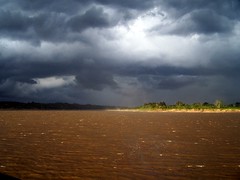 Puerto Maldonado does not care much for oil companies. When ExxonMobil were exploring there in the 1990s, they had to hire staff from elsewhere, as the locals, who lived relatively well, didn’t want to give up their lives and families for such hard work. They didn’t live in luxury, but they were happy with their sustainable approach. Winitzky says, “when the oil companies come they promise only good things, but they don’t mention the social costs. Who is going to pay for the loss of tourism, for the death of the river’s fish, for the forest fires, for the water filtration the people will now need, for the health costs?”
Puerto Maldonado does not care much for oil companies. When ExxonMobil were exploring there in the 1990s, they had to hire staff from elsewhere, as the locals, who lived relatively well, didn’t want to give up their lives and families for such hard work. They didn’t live in luxury, but they were happy with their sustainable approach. Winitzky says, “when the oil companies come they promise only good things, but they don’t mention the social costs. Who is going to pay for the loss of tourism, for the death of the river’s fish, for the forest fires, for the water filtration the people will now need, for the health costs?”
This decision to exploit the national park opens the door for the sale of other protected areas, like Huascarán or even Manu. Behind this virtual collapse of the idea of protected areas, behind this irrational short-sighted action that compromises the future of the next generations, behind all of this is petroleum. 30 to 40 years of a fresh source of cash and afterwards… nothing, an Amazon with humans, but without animals, with no possibility of that they can return. Millions of years of evolution thrown away.
***
Readers might also be interested in my blog, Half the Peruvian Amazon covered with oil leases.
Tags: amazon, candamo, madre de dios, manu, national geographic, puerto maldonado, rainforest



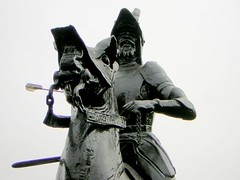



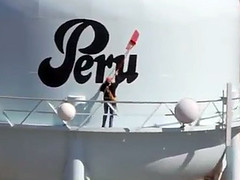
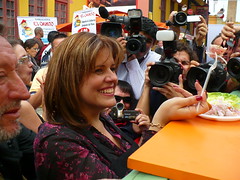
![How to become an Olympian [Featured]](http://farm3.static.flickr.com/2696/4356910596_7d5da589e3_m.jpg)
